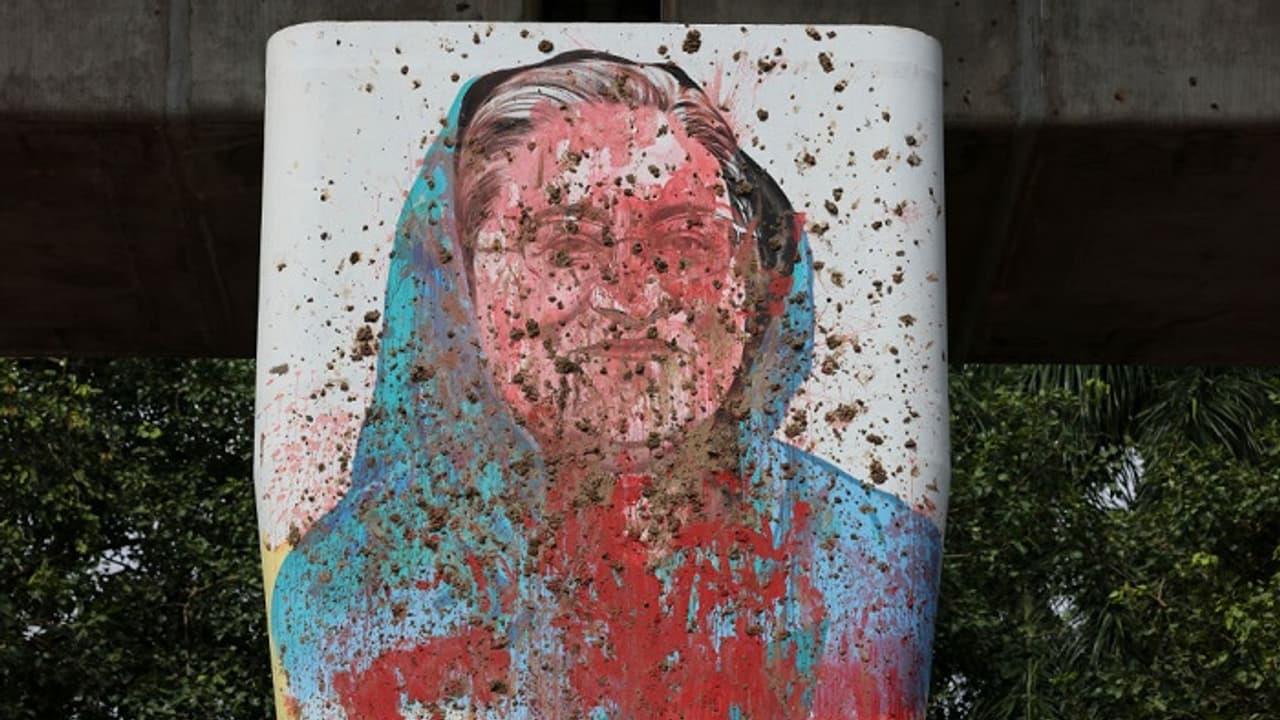
Why Sheikh Hasina Was Sentenced To Death: The 3 Counts Bangladesh Court Found Ex-PM Guilty Of
As Bangladesh awaits one of the most consequential judgements in its political history, the International Crimes Tribunal-1 (ICT-1) on Monday (November 17) delivered its verdict sentencing ousted Prime Minister Sheikh Hasina to death. Sheikh Hasina, former home minister Asaduzzaman Khan Kamal and former Inspector General of Police Chowdhury Abdullah Al-Mamun stand accused of committing crimes against humanity during the July–August 2024 student-led uprising that toppled Hasina's government.
The courtroom atmosphere has been tense, with heavy security deployed in Dhaka as families of victims, lawyers, and observers anticipate the ruling.
Massive Evidence Submitted Before the Tribunal
According to tribunal officials, prosecutors have placed 8,747 pages of evidence on record. This includes seized communications, government directives, internal security documents, and a detailed outline of victims killed or injured during the unrest.
The judges are examining whether Hasina, Kamal, and Mamun:
Instigated the violence through speeches or directives, facilitated the use of excessive force, or failed to prevent killings and torture despite being in command positions.
The Five Major Charges Explained
The prosecution has outlined five key charges, each connected to major flashpoints of the 2024 uprising.
1. Provocative Speech That Triggered Attacks
Hasina is accused of making inflammatory remarks on July 14, 2024, which prosecutors say labelled student protesters as "enemies," allegedly signalling party activists and police to launch coordinated attacks.
Investigators claim violence escalated immediately after the speech, with clashes spreading across campuses.
2. Ordering Use of Lethal Force, Helicopters & Drones
One of the most serious allegations is that the accused directly approved the use of live ammunition, helicopters, and drones to disperse demonstrators.
Prosecutors argue these were "military-grade responses" used against unarmed civilians and students, resulting in mass casualties.
3. Killing of Abu Sayeed in Rangpur
On July 16, 2024, 22-year-old student Abu Sayeed was shot dead in front of Begum Rokeya University in Rangpur. The prosecution says the chain of command leads directly to the three accused, alleging negligence or deliberate approval of force.
4. Killing of Six Students in Chankharpul
On August 5, 2024, the day Hasina fled Bangladesh, six students were shot dead in Chankharpul, Dhaka. The case documents describe this as a "coordinated security operation," with the trio accused of issuing shoot orders, or allowing security forces to operate with impunity.
5. Killing & Burning of Six Men in Ashulia
Also on August 5, six men were killed in Ashulia. Prosecutors say five bodies were burned, while one victim was allegedly burned alive.
The accused are charged with approving the use of extreme force, allowing destruction of bodies, and attempting to eliminate evidence.
Legal Disclaimer:
MENAFN provides the
information “as is” without warranty of any kind. We do not accept
any responsibility or liability for the accuracy, content, images,
videos, licenses, completeness, legality, or reliability of the information
contained in this article. If you have any complaints or copyright
issues related to this article, kindly contact the provider above.


















Comments
No comment